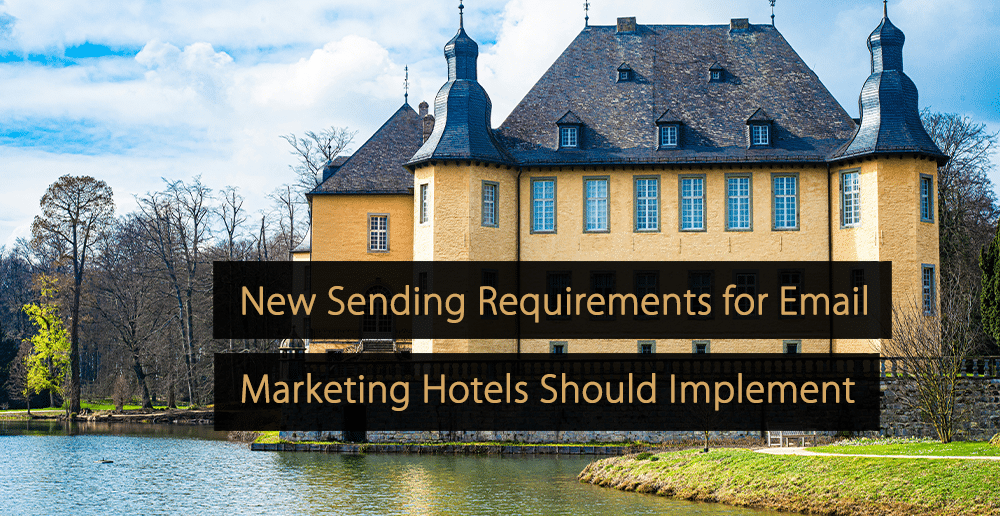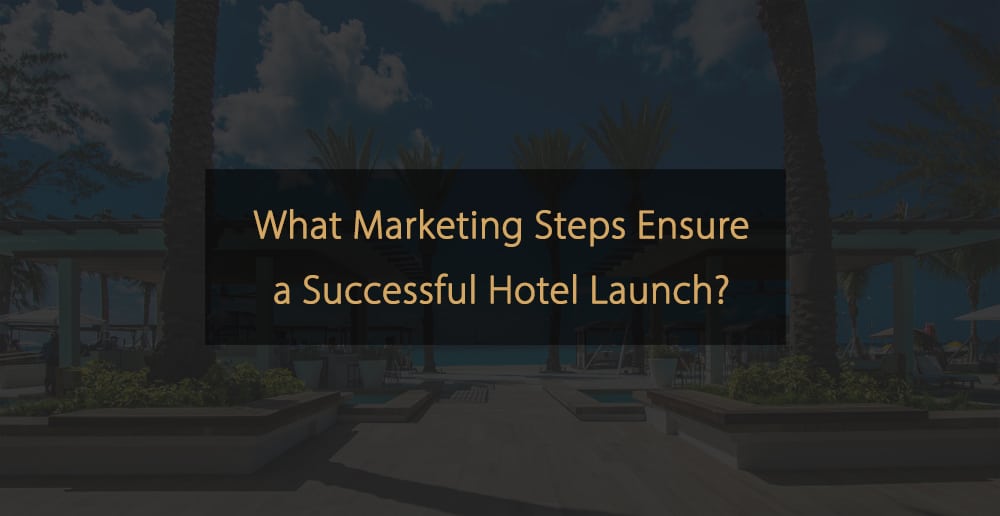Back in February, two of the biggest players in the inbox space — Gmail and Yahoo introduced stringent rules to safeguard users’ inboxes from scammers and spammers. These rules signify a pivotal shift in the ever-evolving landscape of email marketing. To ensure your marketing emails reach their intended recipients, it’s crucial to comprehend and adhere to these new requirements.
New Sender Requirements for Gmail and Yahoo
If you are unfamiliar, check out this blog post, Gmail and Yahoo’s new sender requirements, which is a convenient primer on the latest updates for crafting emailed communication, with handy, “news-you-can-use” tips for increasing open rates and engagement.
While the predominant email platforms have done a lot to help senders understand WHAT they need to do to boost metrics, some hoteliers are still in the dark about WHY. Why are these new provisions in place? What was the reasoning behind the changes? And what happens if I simply ignore the new requirements and continue with business as usual?
In this article, you will find the answers to these questions to increase engagement and better reach customers.
Why Were These New Requirements Adopted?
Any given email list — at least ideally — represents a customer base. Whether the folks whose emails you’ve captured offered them during a sale, due to your having solicited mailing list signups, or during an account creation process, it can naturally be assumed that these addresses belong to at least potential, if not already-extant buyers. They’ve consented to be contacted about the product you’re offering, so they are typically more receptive to sales emails than would be a cold email recipient.
So, you should be able to send them marketing emails with no problem, right?
Well… it’s not always that easy.
Scammers, spammers, and other bad actors compete for your mailing list recipients’ attention (and the dollars). Although savvy users can usually spot dud communications, less-than-honorable entities with their digital hands out are getting better at seeming legitimate all the time.
That’s where spam filters come in. As the two leading providers of individual email online, Google and Yahoo have adopted robust spam filters designed to intercept illegitimate emails before these communications even see the inside of account recipients’ inboxes. And while these safeguards aren’t perfect, they’re still incredibly effective at filtering most emails that account holders would likely find not valuable.
Why Do I Need to Follow These Guidelines?
In short: it’s because the upshot of these spam-sinking safeguards’ efficacy is that unless your marketing emails follow a specific set of requirements, the filters may intercept emails that account holders DO want to see — i.e., yours.
So, by seeing that your marketing communications adhere to the latest standards, your hotel GREATLY increases the chances that your customers will receive what you’ve sent and send some revenue your way as a result.
That Makes Sense. So What Do I Need to Do?
First (at the risk of redundancy), familiarize yourself with the new email sender requirements. It’s tough to overstate the importance of putting these practices into place when giving your marketing emails every chance of reaching their recipients.
Next, diversify. Email is only one piece of the overall marketing puzzle. It’s an important one, sure. But not a basket into which you’ll want to put all your eggs. There are additional ways to drive demand that are just as important, if not more so. You’ll also want to consider aspects like paid search, paid social, banners, and other individual slices of the overall marketing pie. It’s important to reach out to customers via several methods to elevate your chances of awareness.
(Hoteliers can also employ strategies like using their CRM data to model personas and create parallel audiences. For instance, building from a typical customer profile to reach out to groups of potential guests with characteristics similar to past guests. These travelers will likely book based on demographics, psychological characteristics, and similarities to your best customers.)
Additionally, relying on the advice of expert partners is a great best practice. Cendyn often fields questions from hotel clients about things like quantity vs. quality, e.g., “Why should I be sending FEWER emails? Doesn’t sending MORE increase the chances of a larger number getting through?” And the answer is: not necessarily. The “send more” strategy often contains recipients no longer interested in your content, so there is a higher risk of sending unengaged emails and guests who mark your email as spam. Low engagement and spam complaints play into the mailbox provider algorithms. Thanks to many email platforms employing an algorithm-driven, “moving target” approach, increased sending frequency can sometimes be flagged as a negative.
Understanding a bit more about the under-the-surface mechanics that determine the success of processes on that front can also be a benefit.
What Sort Of Mechanics Are Those?
A too-frequent emailing schedule is just one aspect (of many) that comprises what’s referred to as an “Email Sender Reputation,” which is a rating assigned to the general quality of a given domain’s communication. In simplified terms, this is a background process applied by these email platforms, one that considers several factors when applying an umbrella “quality” (or trustworthiness) rating to communications originating from any given sender. It’s a sticky but important factor to take into consideration. But simply put, a poor ESP can mean that your emails might fail some necessary background checks for viability.
It can also be difficult to tell if your ESP is in any way compromised. One of the more difficult parts of this challenging process is that you may not know that your emails’ digital reputation has been determined to be less-than-stellar by these automated routines. There are no notifications, or often any indication (other than lackluster metrics and underwhelming revenue) that your emails are failing undercover quality checks — another reason why adopting these deliverability guidelines is crucial as early as possible.
This All Sounds Really Complicated. So Now What?
In all frankness, these processes can be fairly convoluted. However, that’s largely out of necessity. If these viability checks were easy to nail down, they would also be circumvented by the spammers they’re trying to stop. The same is true of similar background processes like Search Engine Optimization (SEO). The exact way these mechanics work is somewhat nebulous, so those with less-than-noble aims can’t do end-runs around the protections they provide.
This closer look at the “why” behind the “what” of the latest in sender guidelines is by no means a comprehensive breakdown. The subject is a complex one; a hybrid of art and science with constantly shifting best practices. So while navigating these guardrails is in the best interest of both hotel and guest, doing so can nevertheless be an intimidating process to undertake.
Free Guide: Top Tactics to Drive Direct Bookings at Your Hotel
Dive into search engine optimization and gain the expertise you need to propel your website to the top of search results. From keyword optimization to on-page and off-page techniques, this guide is your key to mastering the art of SEO and achieving better online visibility.
Click here to download the guide “Top Tactics to Drive Direct Bookings at Your Hotel“.
More Tips to Grow Your Business
Revfine.com is the leading knowledge platform for the hospitality and travel industry. Professionals use our insights, strategies, and actionable tips to get inspired, optimize revenue, innovate processes, and improve customer experience.Explore expert advice on management, marketing, revenue management, operations, software, and technology in our dedicated Hotel, Hospitality, and Travel & Tourism categories.








Leave A Comment